"Elements of Art in Rangoli" • Twinklekidz@Bendemeer
Learning Objectives:
Children were given opportunities to:
• Explore the elements of art such as lines, shapes and colours to create patterns in their Rangoli.
• Take part in the making of Rangoli in the lead up to the Deepavali celebration.
• Take turns to share materials and complete a Rangoli.
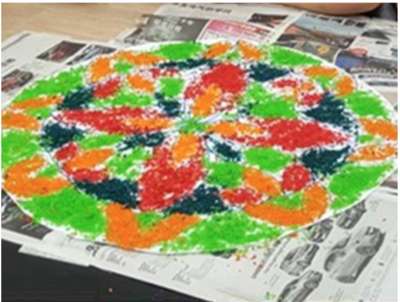
Hindus draw Rangoli patterns near the entrance of their house to welcome their guests, as well as to do good by providing food for animals. The motifs are symmetrical and geometric in shape, commonly drawn with lines that may be straight or wavy and rounded on the edges. Triangles, squares, rectangles, circles, and semi-circles are widely used in Rangolis. Motifs are usually taken from nature, often featuring plants and animals. It is an art form which teaches patience, endurance and determination. It also enhances creativity, concentration and confidence.
This activity was carried out with the K2 children in the centre. Teachers acted as facilitators of learning by breaking down the Rangoli-making process into bite-size tasks: First, the teachers showed children pictures of Rangoli motifs and explained that Rangolis are made up of various lines, shapes and colours. Children were encouraged to identify shapes which best resemble the designs on the Rangoli.
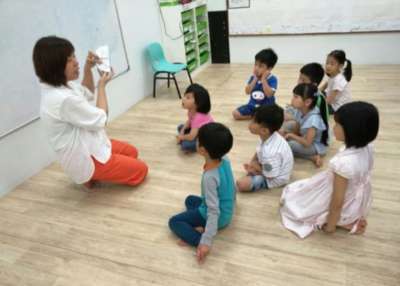
Since Rangolis are symmetrical, the teachers scaffolded the activity by getting children to design the Rangoli from a quadrant, before replicating the design to the rest of the circle.
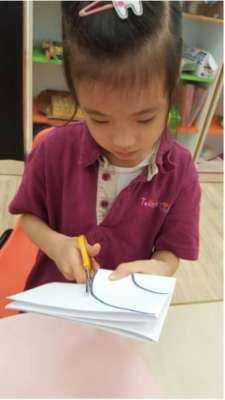 | 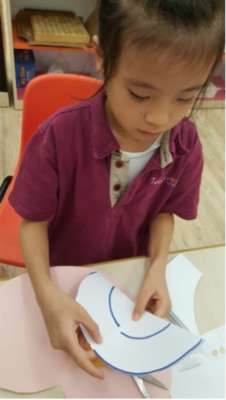 | 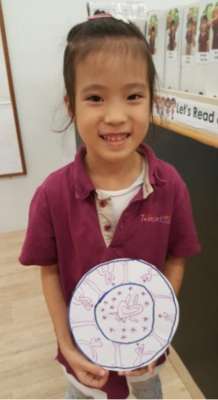 |
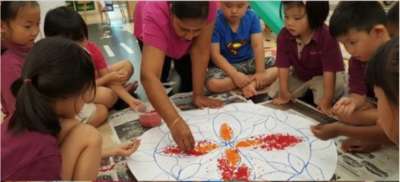 | 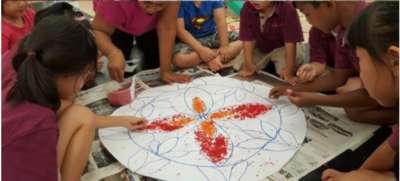 | 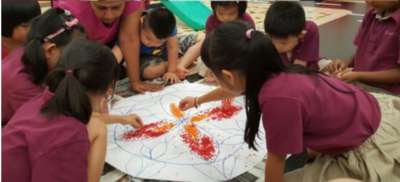 |
After completing the design of the Rangoli on the paper, the children discussed how they could lay the coloured rice. The children coloured the rice using food colouring and dried them overnight.
As they worked in groups to create the Rangoli, they realised that they need to wait for each other patiently and to assist those who were struggling. They learnt to take turns and not to mess up the whole design.
The children were overjoyed to see the completed Rangoli although they were very tired. They persevered and squatted for hours to complete the design as a team.
This activity provided the children with the opportunity to learn more about Rangoli, an art form from another culture as they worked together in a team. It was a rich learning experience for the children!

Contributed by:
Chua Chin Ping,
Twinklekidz@Bendemeer